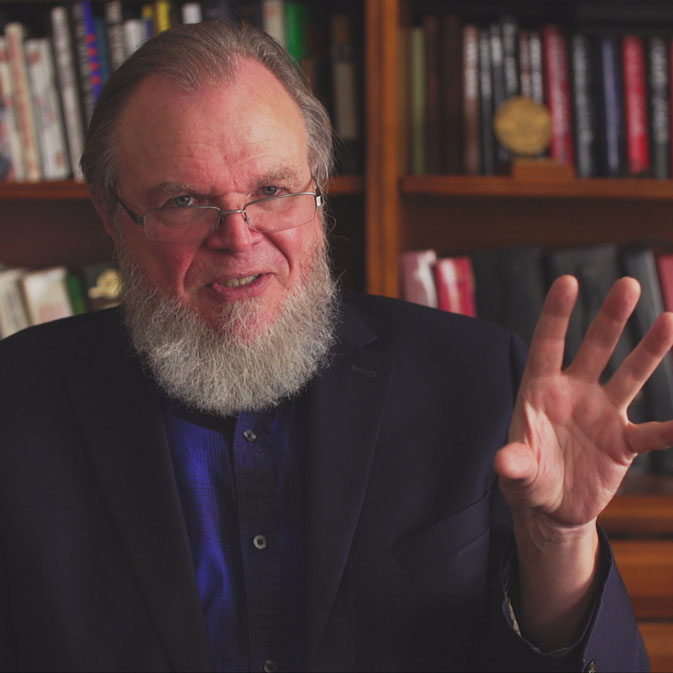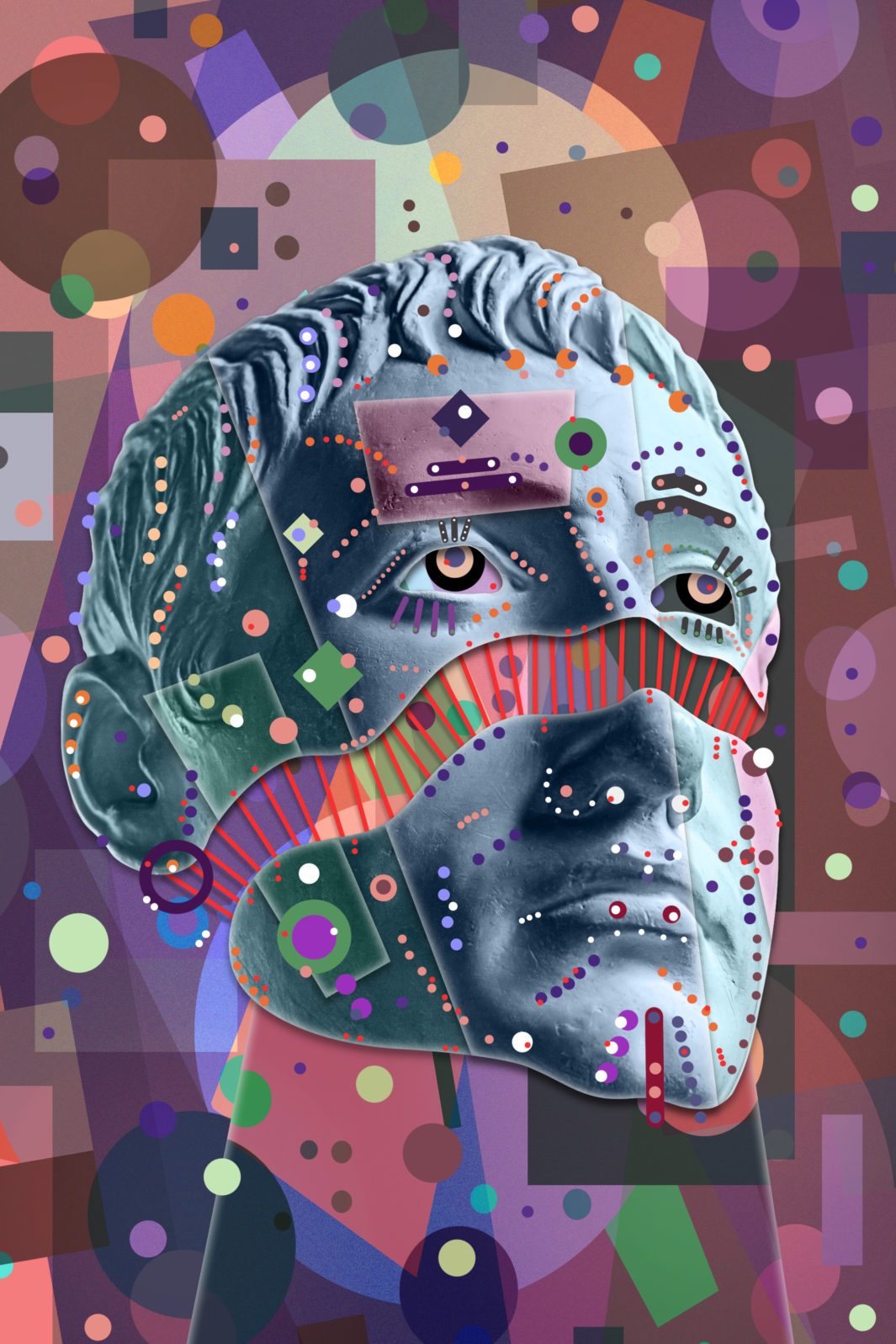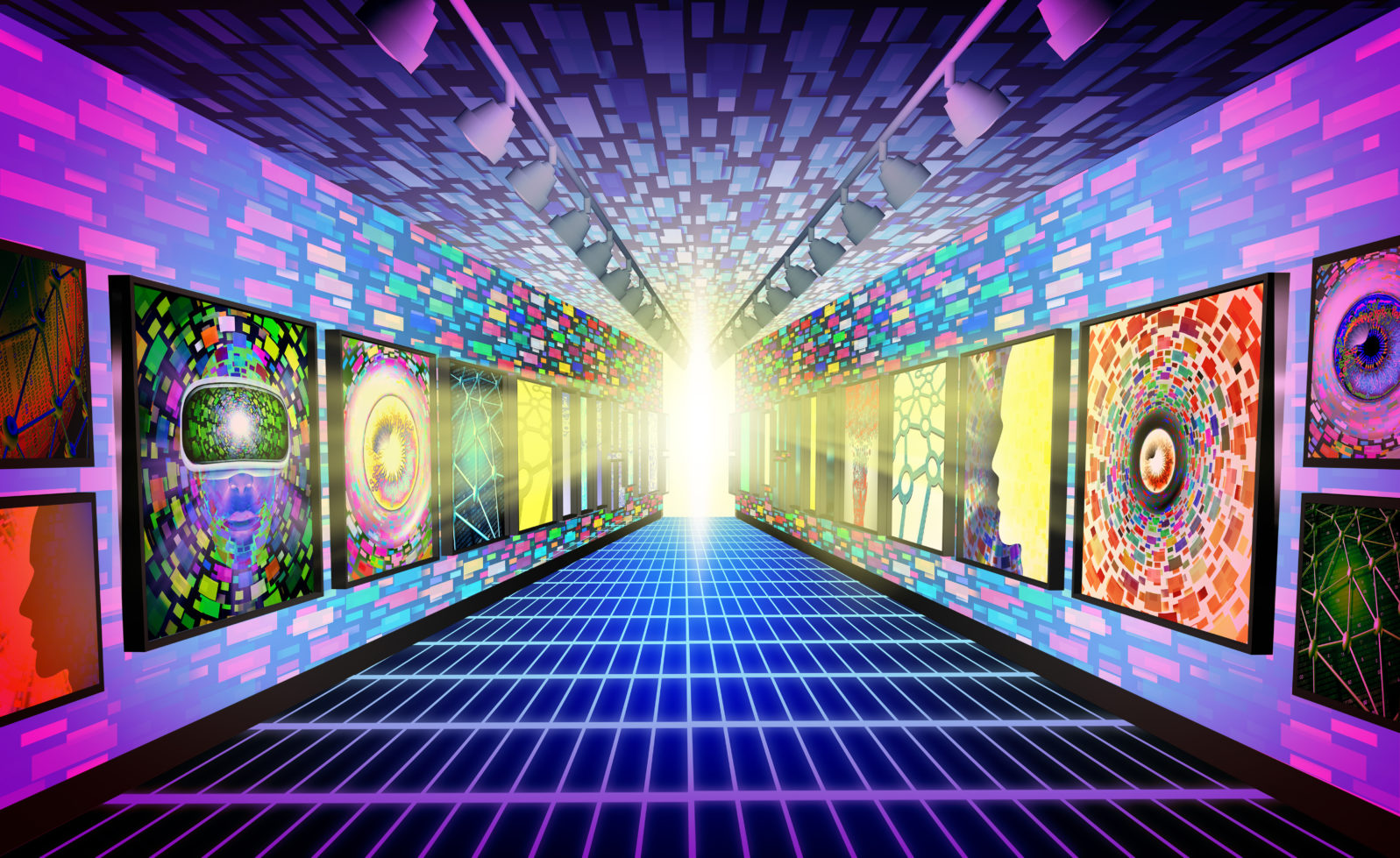When You Buy a Non-Fungible Token (NFT), What Do You Own?
You are buying someone’s digital idea. Just what legal rights that NFT confers is an open question. But the NBA is now selling them…In the first episode of the discussion between computer engineering prof Robert J. Marks and computer engineering grad students Adam Goad and Austin Egbert (here and here), the discussion started with the projected metaverse and slowly turned to the wild world of cryptocurrencies and non-fungible tokens — like Twitter founder Jack Dorsey’s first tweet. What’s worth knowing about this burgeoning digital world? Here are Bob, Adam, and Austin again in Episode 2, What are NFTs?, Part 1:
This portion begins at 00:10. A partial transcript, notes, and Additional Resources follow.
Robert J. Marks: We have been talking to Adam Goad and Dr. Austin Egbert both at Baylor University about Web3. Web3, which uses distributed computing, is the tool that’s used in so-called non fungible tokens — stuff that I don’t understand. And they’re going to try to sell me on non fungible tokens here, or at least explain it to me to the point where I have an understanding. Adam, let’s start with you. People are selling pictures on the internet using a non-fungible token. What’s the difference between a non-fungible token and a fungible token?

Adam Goad: A fungible token means that each of these tokens can be interchanged. All $10 bills are the same. But what if we had trading cards? If I had just some unknown rookie baseball player and you had a Babe Ruth, it would not be an equal swap. So they are non-fungible, not interchangeable.
Bitcoin is an example of a fungible token. Each Bitcoin is equal to every other Bitcoin. It only matters how many of them you have. But with NFTs … each of them is different and some of them are rarer or legendary. And that could mean that they have more value when people are trying to sell them.
Robert J. Marks: It seems to me that it’s just a way of selling art and music and gaming collections on the web. So what’s the big deal about non-fungible tokens, and why would I want to buy one?
Adam Goad: Artists can use them to sell their arts. Musicians can use it to sell the music. There are some games that have been made where by playing the game, you can generate NFTs of perhaps various equipment you can use.
Robert J. Marks: Wait, so is this like mining Bitcoin in a small way?
Adam Goad: It is not quite the same thing. It’s not doing the cryptographic math to support the blockchain. How about we use this example? If you play Pokemon, you go into the game and you collect the various creatures. There are some games out there now on the blockchain that you can collect various monsters and get them as an NFT. So then with this NFT, you could continue to use it in the game. You could perhaps even level it up and improve it in different ways. Or you could go to a NFT marketplace and sell it to someone. You would be selling it directly through the decentralized systems. So you can sell it for whatever price you agree upon, you can auction it, but you wouldn’t have to go through any centralized authority and no one would be able to stop you from doing it.
Famous non-fungible tokens:
Robert J. Marks: So let me ask you this: I can understand putting a high price on a physical painting by someone like Jackson Pollock or maybe Picasso. It’s a physical piece of canvas that I can hang on my wall. Yet if I have a digital painting and that digital painting can be replicated, for example — it’s very easy to copy digital files — what is the worth of me investing in a thing that can be taken from me so easily?
Adam Goad: It is a common joke among NFT critics that they can just right click and save any NFT someone has. The images, the artwork behind NFTs, are all publicly available. They have to be, by nature, for the system to work. You can download NFTs right now that are worth millions of dollars. The real value though behind the NFT is not the image of the artwork but the record of ownership. When you get down to the underlying technology, all you are really getting with the NFT is an entry into the ledger of the blockchain that your cryptocurrency address has this token. That token will actually just contain a link. That link will go to a small JSON text file that will have information about the NFT —
Robert J. Marks: What’s a JSON text file? I don’t know what that is.
Austin Egbert: A JSON text file is merely a standard way of serializing a computer code object in a human readable format. So you have different fields of the object and then their value. It’s stored in a standardized way that computers can read and process.
Adam Goad: So this file will say the name of the NFT, perhaps the token number inside the NFT collection, it will have a description, and it will have a link to the image that it represents. So when you buy an NFT, all you are buying is that public, immutable record of your ownership of it. You do not have exclusive rights to it. There’s actually a lot of legal debates right now about what rights can be conferred with an NFT. Does buying an NFT entitle you to copyright usage? Are you the owner of it? Does it grant you a license?
Non-fungible tokens and the law
Robert J. Marks: Yeah, that’s a question that I would have. I had a friend tell me that copyrights and patents are just a license to sue somebody. So I guess that’s my question. How do they protect you any more than a copyright does?
Adam Goad: I would say it protects you even less than a copyright.
With a copyright or a patent, you can take someone to court and stop them, attempt to stop them at least, from using your artwork or whatever it is you have created. With an NFT, you have no such protections. Anyone can just take your image and use it however they please. It is public record and there’s no way you can stop them.
Robert J. Marks: This right to use is a big thing when you do a lot of publication. I just published a book in which I wanted to use an old Dick Tracy cartoon that referred to neural networks. And it was of course copyrighted.
Dick Tracy, for those who are young, used to be a detective in the comic strips. Anyway, we attempted to obtain a copyright permission for doing that, were even willing to pay a little bit for it, but there was no contact that we could make because the strip was so old. it went back to the 1980s.
So, it seems to me, if that Dick Tracy comic was a non fungible token, there’s a possibility that we could have gone to the non-fungible token holder, paid for the copyright usage, and then used it in the book. It would’ve been much more convenient than trying to go through all of the bureaucracy that we tried to go through. So, could this be one of the advantages of doing non fungible tokens of that sort?
Austin Egbert: One complication I can see is it’s a little bit less flexible than copyright. Copyright is, if you have the primary ownership, you have the ability to grant copyright to other people. However, non-fungible tokens, by their nature not being interchangeable with other things, implies that… you would actually get the ownership and then you would be the one who controls who’s allowed to use it. So it’s not them granting you permission. They’ve just sent you the whole thing and now it’s yours.
Adam Goad: My understanding of some of the legalities is basically, the creator retains the copyright rights to the artwork that they have published through NFTs. So NFT law is still being developed and is undefined in many ways. The current theory is though that they cannot pass along copyright privileges through the sale of an NFT because there is no way to enter into a contract with a buyer or the people that buyer transfers to. Perhaps you could have someone agree to something on a website before they are the first one to buy it. But if they pass that along to someone else, that person has entered into no contract.
The market for semi-fungible tokens
Adam Goad: If we do define laws that allow this to work, to allow copyrights to function in this way, there is such thing as a semi-fungible token.
Robert J. Marks: Semi-fungible. Is that tokens that kind of look alike?
Adam Goad: Yes. A common implementation of this is through ERC 1155, which is a type of Ethereum smart contract. That allows a multiple of the same token. And perhaps these tokens can change in other ways on their own, but they all start the same. So they start fungible and perhaps they can become non-fungible or whatever the creator has developed for them. But this would be a way that you could grant multiple people a license to a copyright, perhaps, as they would all have an equal license through a semi-fungible token.
Note: “Concert tickets, gift vouchers and coupons are all examples of semi-fungible items… Another way to understand this is to imagine owning a token that represented a concert ticket to see The Beatles’ last-ever performance. The ticket would have a face value and could be exchanged for another identical concert ticket, provided it was the same band on the same date and in the same seating area. Once the concert ended, the token representing the ticket would then become collectible memorabilia and have an entirely new value. It would also mean that the token could no longer be exchanged for a valid concert ticket of the same initial face value to see a different band.” – Anatol Antonovici
Robert J. Marks: Would this be, for example, something like the price of paintings? Yyou can have a painting, I don’t know, 20 prints made of this painting. And then you sell the 20 prints and each one of those prints becomes its own token, if you will. Is there an analogy there?
Adam Goad: Yes, you could think of it in that way… You could have the official non fungible version of an artwork, and you could also perhaps provide lesser versions as semi-fungible tokens.

Robert J. Marks: You can make as many copies of that image as you want to, whether you own the non-fungible token or not. Why in the heck should I ever want to invest in something like that?
Adam Goad: There are all sorts of different motivations. Perhaps you are a collector, and instead of owning a print of a piece of art, you want to own the original piece of art — or at least be able to say you are the owner. That is kind of the original use of NFTs. Several of the beginning high value NFTs were the “originals” of the digital files of various popular memes. Several of those sold for millions of dollars when they were released.
These images are all over the internet, but now someone can say that they own the original, that they own that meme.
The National Basketball Association has gotten involved in NFTs
Adam Goad: So one property of NFTs is that they are non-divisible. You cannot have half of an NFT. You can only have a whole NFT. But perhaps something similar to what you’re talking about there is the use of the NFTs as collectibles. So the NBA, the basketball association, have actually gotten involved in this, and they sell NFTs of video clips of famous basketball moments.
You can go onto the websites and it’s just like buying trading cards. You buy [something] like a foil pack of them and you can open it, and it will have video clips of various basketball moments. Maybe it’s LeBron James getting a slam dunk or maybe it’s just an average player dribbling down the course — they have various rarities to them and various significances. And then on that website, you could trade them, sell them to other people who would also be interested in buying them.
Robert J. Marks: But copyrights aside, anybody can basically use those clips. Is that right? What’s the advantage of me owning them?
Next: What gives non-fungible tokens their value?
Here’s the first part of Episode 1: Why don’t some tech moguls like Web3, the new internet? Web3 is a decentralized, less controlled version of the internet, as George Gilder predicted in Life After Google. However, some developers want to go further and make Web3 a virtual reality in which our avatars can live, as in the film Ready Player One.
And the second: What’s really happening with Bitcoin and other cryptos? How, for example, will miners make money when all the bitcoins have been mined? Robert J. Marks, Adam Goad, and Austin Egbert discuss what we hope is NOT the metaverse future, along with where Bitcoin and NFTs are headed.
Here’s the first part of Episode 2:
When you buy a non-fungible token (NFT), what do you own? You are buying someone’s digital idea. Just what legal rights that NFT confers is an open question. But the NBA is now selling them… Iconic images sweep the internet. With NFTs, a collector can say, I OWN that meme! Robert J. Marks and fellow engineers ponder what “own” means here.
You may also wish to read: How can non-fungible tokens (NFTs) be made to work better? Bernard Fickser offers twelve steps to handling NFTs in a way that dispenses with cryptocurrency-based blockchains and works in ordinary online marketplaces like eBay. In Fickser’s view, NFTs can work if they avoid self-serving cryptocurrency blockchains like Ethereum and enable real-world legal transfers of ownership.
 Image Credit: Ded Pixto -
Image Credit: Ded Pixto - And the second:
What gives NFTs (non-fungible tokens) their value? But first, a tour through the seamier side of the internet, supported in large part by the very blockchain that mints NFTs. If computer engineering prof Robert J. Marks wanted to market his cartoons as NFTs, what would he do? What would it cost? Adam Goad explains.
Here’s the first part of Episode 3:
Are NFTs a bubble that has just plain popped for good? Despite the crypto crash, they seem to be developing a life of their own — in ticket sales, for example. The NFTs that sell well now provide more than just “ownership” of an image, Adam Goad tells Robert Marks. They could be a marker of membership.
And the second:
Why didn’t decentralized organizations work in the crypto world? DAOs broke down when people tried to make them interact with the outside world. Adam Goad tells Dr. Robert Marks, as soon as you get a human involved, that human can do something that the code is not telling it to do.
Additional Resources
- Adam Goad at IEEE Xplore
- Dr. Austin Egbert at IEEE Xplore
- ”Just As Cryptocurrencies Went Mainstream — a Huge Collapse!” by Jonathan Bartlett at Mind Matters News
- ERC-1155 Multi-Token Standard at ethereum.org.
- American Kingpin by Nick Bilton at Amazon.com
- Etherscan
- OpenSea NFT Marketplace
